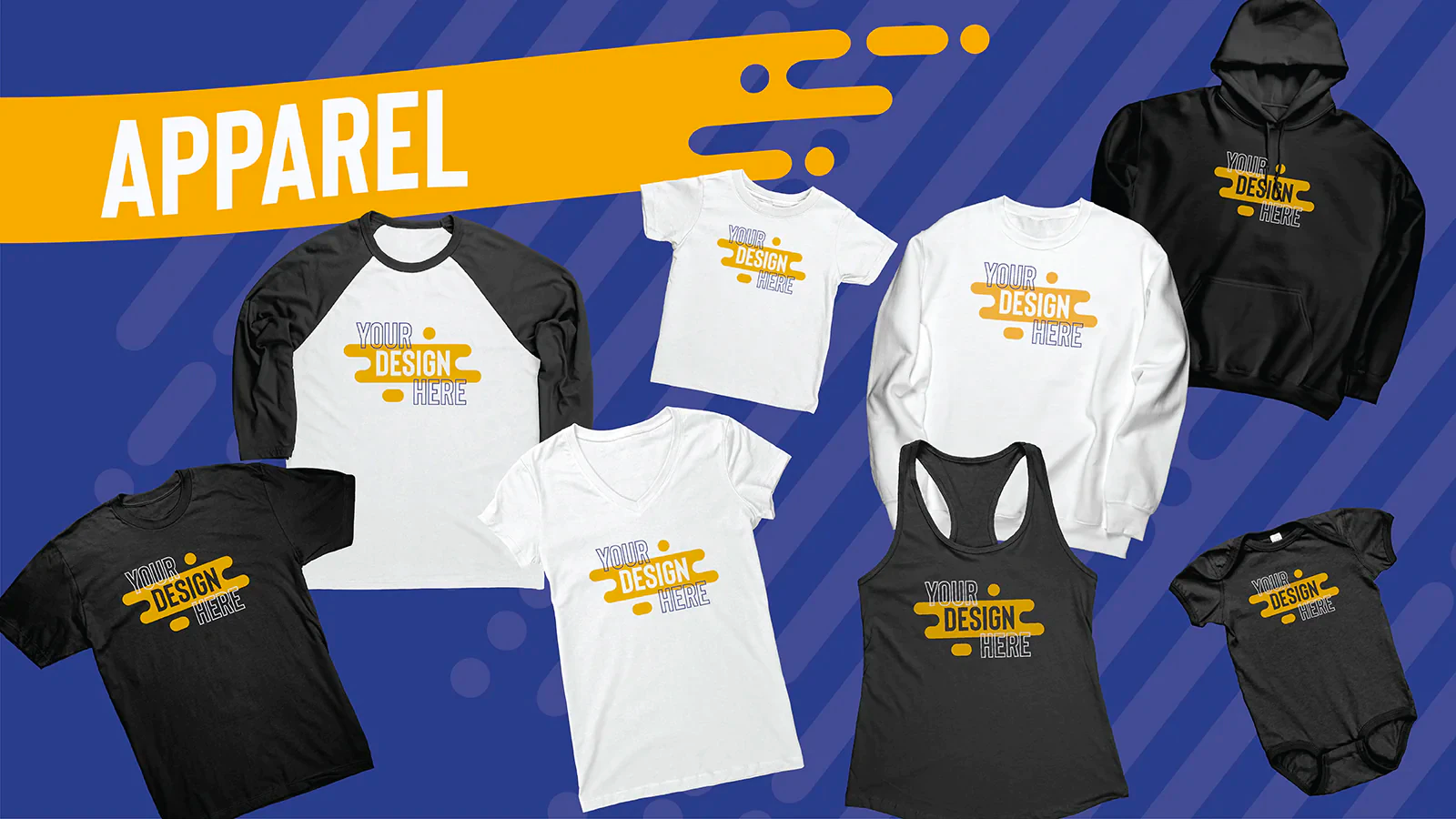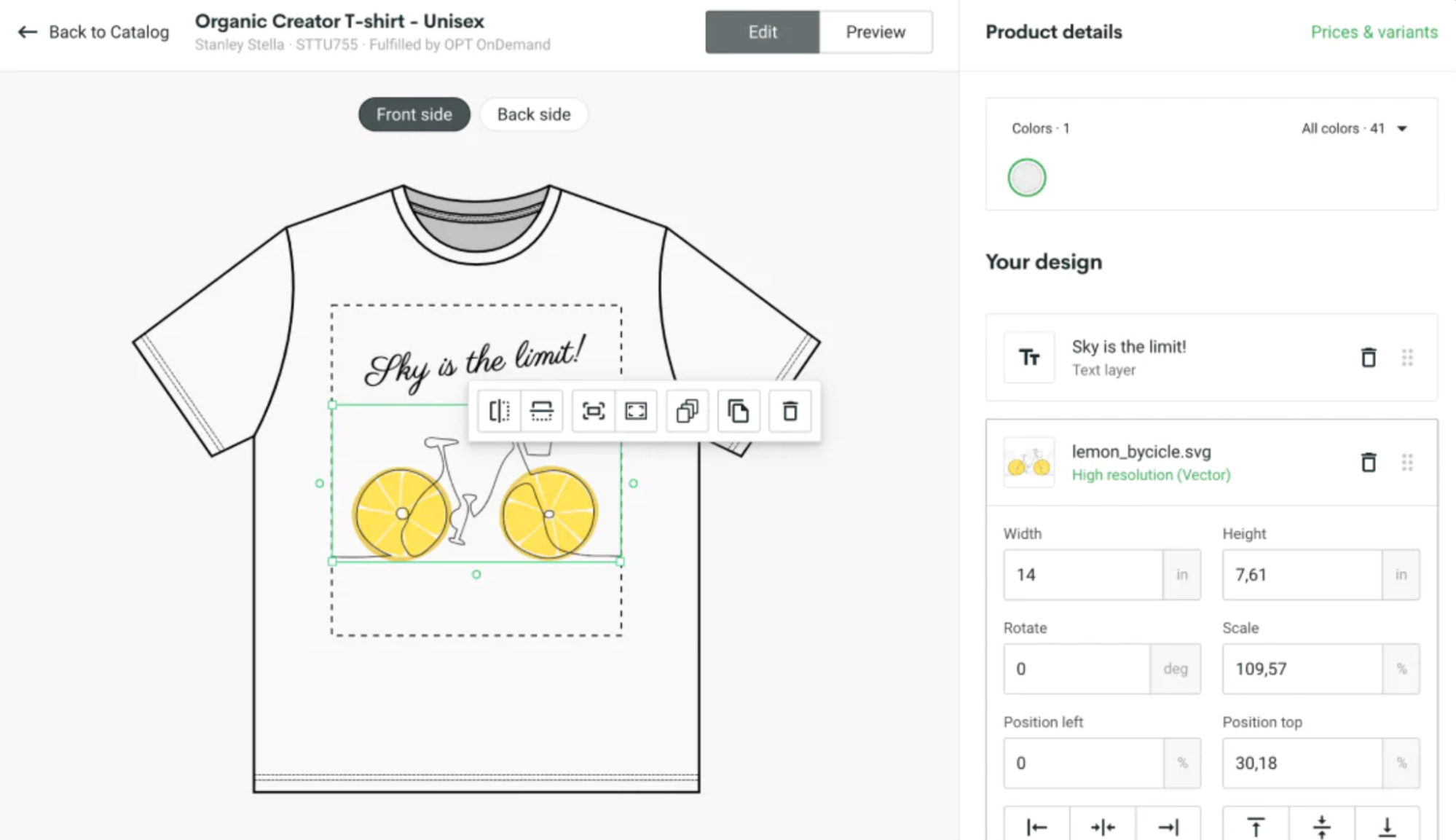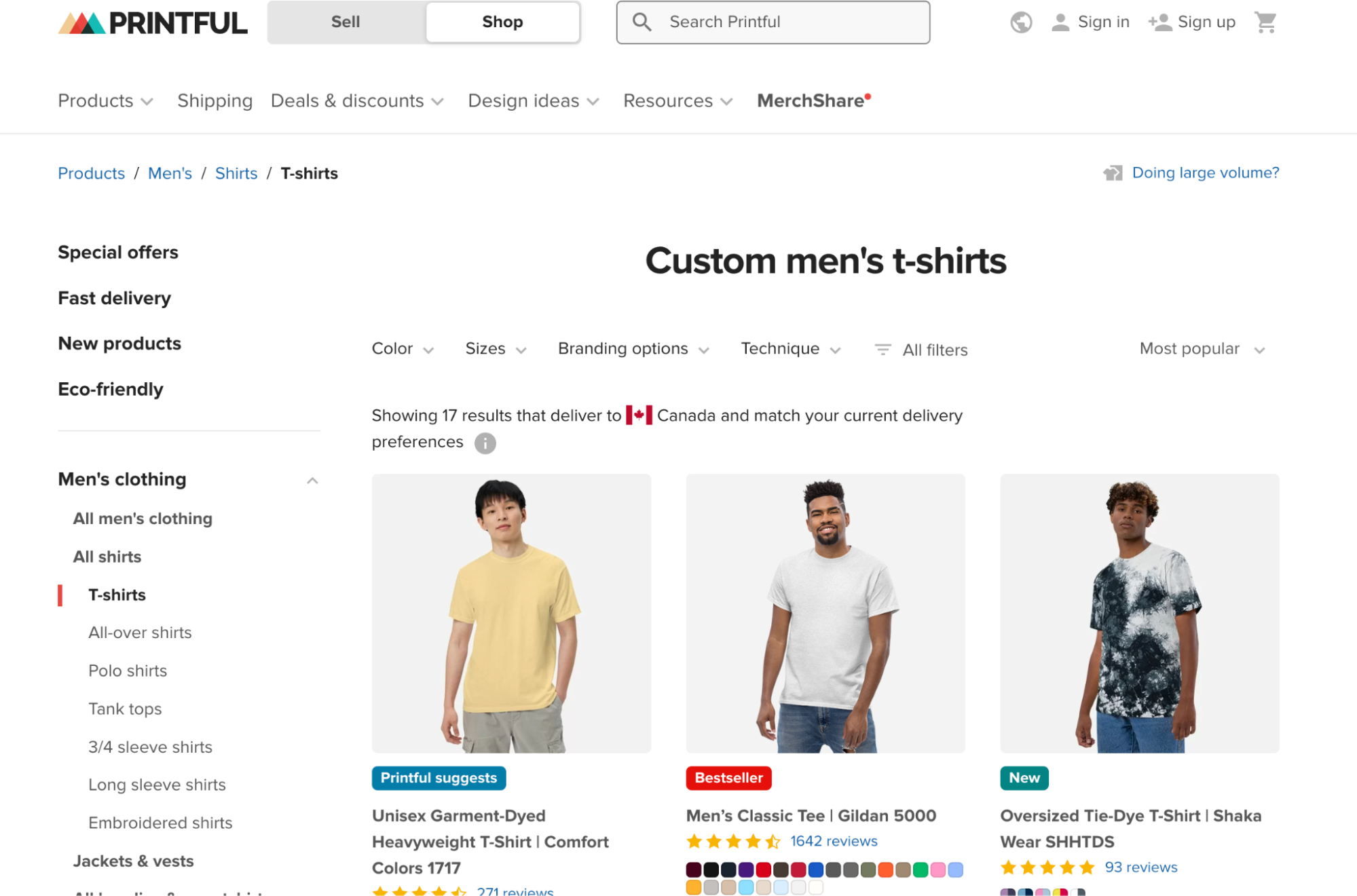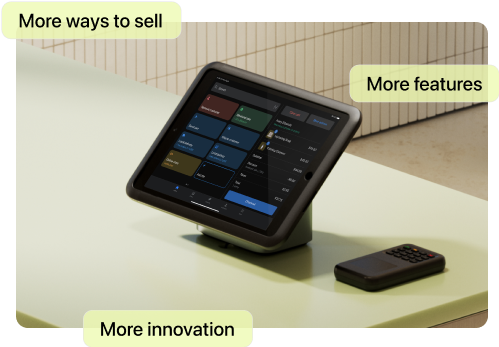Every year, fashion brands generate billions of dollars from t-shirts. Their universal appeal and endless design options make tees a good choice for starting a business.
The best t-shirt businesses find ways to stand out in a crowded market. Whether it’s premium materials, original graphics, or an irresistible brand, you’ll need to differentiate your shirts from the rest.
An accessible way to enter this industry is by selling print-on-demand t-shirts. This method allows you to start a business with minimal costs and time.
Here are six steps to help you create shirts and launch your store.
Ready to start your business? Create your website today or learn more about Shopify.
Sell print-on-demand t-shirts in 6 steps
- Find your t-shirt niche
- Create your print-on-demand store
- Create t-shirt designs
- Add products to your store
- Add sales channels
- Plan your marketing strategy
1. Find a t-shirt niche
To successfully sell online as a small business, you need a niche. A niche is a set of customers with specific interests and needs. For example, the athleisure niche targets consumers looking for workout clothing that also functions as everyday wear.
With so many t-shirt options available to consumers, unique t-shirts that resonate with a niche audience can make all the difference. Start by researching existing businesses to identify market gaps—this will help you spot opportunities where your designs can serve an unmet customer need.
When you’ve found a niche, use your research to develop a buyer persona. Personas are fictional descriptions of your ideal customer. They guide you as you create your store, hone your brand, and craft messages that connect with your audience.
2. Create your print-on-demand store
After you’ve found a niche, the next step is to create a place to sell your t-shirts. For most businesses, this means building an online store.
Shopify is a popular choice for entrepreneurs and clothing designers, because it allows you to easily build a store and connect your favorite print-on-demand app. This makes it simple to list your products for sale and send orders to your print-on-demand partner.
To start building your store, follow this startup guide.
Connect a print-on-demand app
Connecting a print-on-demand app to your store allows you to import products and automatically forward orders for production and shipping to customers.
Each app offers a different range of products, design tools, and shipping options. Select a service that stocks the types of t-shirts your customers love, provides customization options aligned with your designs, and can produce and ship your shirts efficiently.
Once you’ve chosen a print-on-demand app, follow the app’s instructions to integrate it with your store.
Recommended apps for print-on-demand shirts
Apliiq

Apliiq specializes in apparel, offering a wide selection of t-shirts, long sleeves, hoodies, and sweatshirts. Choose from a range of colors and materials to match your brand.
- Brands include: Comfort Colors, Hanes, New Era, Nike.
- Fits include: Crew neck, cropped, lightweight, pocket tee.
- Materials include: Cotton, dryblend, heavy cotton, jersey, polyester.
- Customization options: Digital printing, embroidery, labeling, screen printing.
- Average fulfillment time: Two business days.
- Mockup generator: Yes.
Teelaunch

Teelaunch stocks men’s, women’s, and unisex t-shirts, tank tops, long-sleeve tees, and sweatshirts. Its collection features options for youth, toddlers, and babies, with a variety of colors and sizes available.
- Brands include: Canvas, Champion, District, Gildan.
- Fits include: Cropped, long sleeve, tank, V-neck.
- Materials include: Cotton, polyester.
- Customization options: All-over printing, direct-to-garment printing.
- Average fulfillment time: Four to 12 business days.
- Mockup generator: Yes.
Printify

Printify offers an extensive catalog of print-on-demand products, including a wide selection of t-shirts, tank tops, and hoodies. With more than 850 products available, you can find various styles and colors to suit your brand.
- Brands include: Adidas, American Apparel, Fruit of the Loom, Sport-Tek.
- Fits include: Crew neck, tall, unisex, V-neck.
- Materials include: Cotton, heavyweight, polyester, tri-blend.
- Customization options: All-over print, embroidery, gift messages, inserts, labeling, printing.
- Average fulfillment time: Two to seven business days.
- Mockup generator: Yes.
Printful

Printful is a popular choice for print-on-demand sellers, offering a variety of t-shirts, including options for men, women, and children. Its selection includes standard t-shirts, polo shirts, and tank tops, all available in multiple colors and styles.
- Brands include: Champion, Columbia, Cotton Heritage, Gildan.
- Fits include: Athletic, curved hem, oversized, standard, slim, unisex.
- Materials include: Blend, cotton, organic cotton, polyester.
- Customization options: Cut and sew, embroidery, labeling, printing.
- Average fulfillment time: Two to five business days.
- Mockup generator: Yes.
3. Create t-shirt designs
You might already have designs for your t-shirts in mind, especially if you’re an artist or illustrator with an established audience and a signature style.
Alternatively, you could be looking to sell shirts featuring a logo or an existing graphic you own, such as merchandise for a specific brand or event.
Or, perhaps you have no design experience and need to outsource your t-shirt designs.
Regardless of your starting point, it’s possible to create print-on-demand shirt designs that compete with established brands.
Print-on-demand design tools
Most print-on-demand services offer easy-to-use design tools for creating your shirts.
Here are some common features to expect:
- Stock image library: Access a range of images and graphics to incorporate into your designs without needing to create everything from scratch.
- Text editor: Add text to your designs in a range of fonts.
- Printing method selection: Choose a printing method for your designs, such as screen printing, direct to garment, or sublimation printing.
- Mockup generator: Generate mockups of your t-shirts to visualize how your designs will look when printed.
- File upload: If you have unique graphics or designs, upload and apply your own image files.
- Templates and guides: Utilize pre-designed templates to create professional-looking t-shirts even if you’re not a design expert.
- AI generation: Create unique graphics and illustrations based on a text prompt input.
Shirt design templates
If you’re comfortable with design software, there are plenty of t-shirt templates and mockups available. You may be able to use these instead of a print-on-demand design tool to achieve more complex designs.
These resources provide free templates to make the design process easier and less technical.
4. Add products to your store
Once your print-on-demand t-shirts are ready, add them to your online store so customers can find and browse your product line.
If you’re using a compatible print-on-demand app, this process should be straightforward. In some cases, you may need to follow your print-on-demand partner’s instructions to connect your product listings or manually upload product information.
Edit product pages
After importing your products, enhance your product pages with content to make each item discoverable and give customers the information they need to make a purchasing decision.
The goal of your product pages is to promote your t-shirts, improve their visibility in online searches and Google Shopping, and ultimately persuade shoppers to buy.
When building product pages, include the following details:
- Descriptive product names: Craft unique title tags for your product pages to help shoppers find your items in search engine results. Incorporate essential product details to enhance visibility. For instance, if you’re selling a slim-fit t-shirt featuring a car graphic, use a descriptive title like “Men’s Retro Chevy T-Shirt – Ultimate Slim Fit.”
- Detailed product descriptions: Product descriptions should provide all the details customers might want to know. Cater to the interests of your niche and incorporate information in a Google-friendly format. A well-structured description might include information about a shirt’s material, fit, care instructions, and any unique features.
- Pricing information: Clear and simple pricing helps customers trust your brand and feel confident about their purchases.
- Product photos: Invest in high-quality product photos to showcase your designs. Include a variety of images, including close-ups to highlight fabric quality and print details. Consider creating product videos to provide a dynamic view of your t-shirts.
5. Add sales channels
Selling t-shirts through your online store is just the beginning. To reach more customers and increase the visibility of your products, connect your store to online marketplaces like Amazon and eBay.
With Shopify, you can also connect your store to social media storefronts on Instagram and Facebook, as well as TikTok and YouTube. Social storefronts allow users to browse and buy items without leaving the social platform.
Consider adding a wholesale sales channel to your t-shirt business, so you can sell your shirts to other retailers in your niche.
6. Plan your marketing strategy
Once your store is live, it’s time to attract customers. Start by identifying where your target audience spends time online—whether that’s on social media, forums, or websites.
Plan a marketing strategy that allows you to reach your audience on these platforms. This might involve social media advertising, content marketing, and influencer partnerships.
Even if you’re starting your business on a budget, there are plenty of ways to promote your brand for free.
Consider:
- Sharing behind-the-scenes content and design stories with your audience via social media posts
- Collaborating with other small businesses or creators to cross-promote products
- Sending personal emails to share your story with customers and keep them informed about new designs and special offers
Also consider running a launch promotion, like offering a discount on first purchases or a two-for-one deal.
Why choose print-on-demand t-shirts?
- Low investment: Start your business without the cost of inventory, reducing financial risk.
- Design flexibility: Easily test designs without committing to large production runs, allowing you to keep up with market trends.
- No storage issues: Products are printed and shipped when ordered, so you don’t have to worry about storing extra products.
- Streamlined shipping: Print-on-demand companies automate order fulfillment and handle shipping.
- Scalability: As your business grows, you can easily add more designs and products.
- Global reach: Most print-on-demand companies offer international shipping, which helps you reach a wider audience.
Get started with print-on-demand
The great thing about print-on-demand is its flexibility. You can test designs, try out different niches, and adjust your products based on customer feedback. When you’re ready, it’s simple to start print-on-demand with Shopify.
Read more
- How To Source Products To Sell Online
- How To Make and Sell Merch Your Fans Will Rave About
- TikTok Merch: How To Make and Sell it on Tiktok
- The 9 Best Dropshipping Websites for Your Online Store
- The 13 Best Dropshipping Suppliers in 2024
- 130+ Dropshipping Products To Sell for Profit
- How to Sell Art Online- The Ultimate Guide
- The Ultimate Guide To Dropshipping (2024)
- Is Dropshipping Worth It in 2024?
- 6 Tips for How To Be a Successful Dropshipper (Full Playbook)
Print-on-demand t-shirts FAQ
Are t-shirt businesses profitable?
While a t-shirt business can be successful, profitability depends on several factors, including the profit margin between t-shirt production costs and sale price. The popularity of t-shirt designs, marketing efforts, and management of operational costs all play a role in a t-shirt business’s profitability. The print-on-demand model allows t-shirt sellers to start with minimal upfront expenses, which may increase the potential for profit.
How many designs do I need to start a t-shirt business?
There’s no specific number of designs required to launch a t-shirt business. In fact, you can find success with a single design that resonates with a target audience. Having a variety of designs may help attract a broader customer base. Testing different designs over time can provide valuable insights into what customers prefer.
What are the best print-on-demand t-shirt services?
- Printful
- Printify
- Apliiq
- Teelaunch
How do I market my t-shirt business?
To market a t-shirt business, use social media platforms like Instagram and Facebook to showcase t-shirt designs and engage with relevant audiences. Influencer collaborations and targeted ads can also help increase visibility. Other marketing channels include email. Building an email list can be an effective way to keep customers informed about new t-shirt designs and promotions.
How do I choose a niche for my t-shirt business?
When selecting a niche for a t-shirt business, consider your interests and market demand. Research potential audiences and trends to find a niche that not only excites you but also has a viable customer base. The more specific your niche, the easier it may be to connect with your target audience.
What else can I sell with print-on-demand?
Once you establish your t-shirt business, you can easily expand your product line to include other apparel items such as:
- Hoodies
- Sweatshirts
- Tank tops
- Hats
- Bags
Expanding your product line allows you to cater to a wider audience and increase your sales potential.






